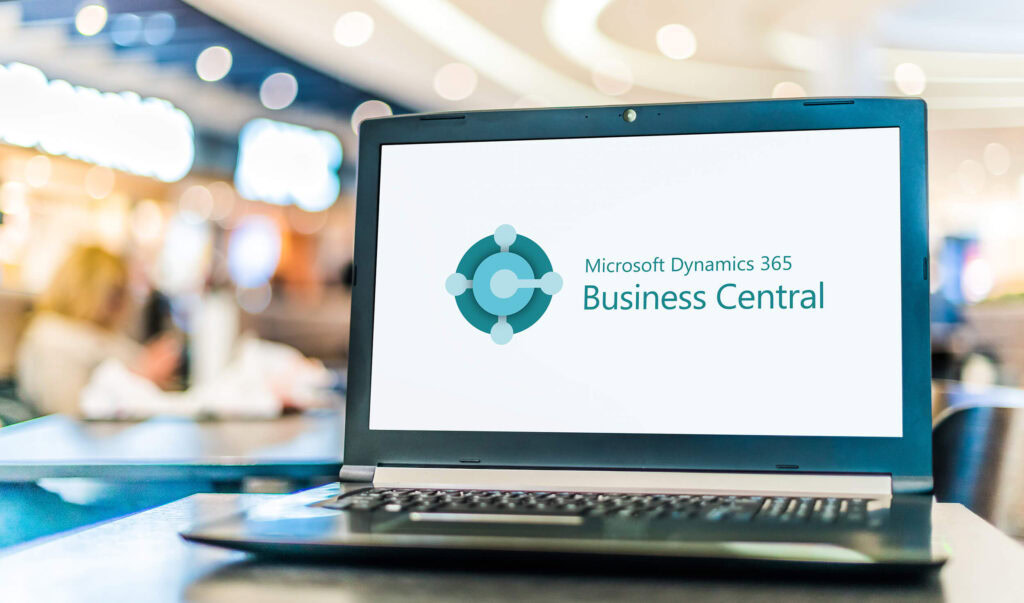Home / Blog / Insights / Great Plains End of Life: How to Navigate the ERP Migration

•
Great Plains End of Life: How to Navigate the ERP Migration
For more than two decades, Microsoft Dynamics GP—still commonly known as Great Plains—has been the backbone of financial and operational management for thousands of mid-sized businesses. Reliable, familiar, and trusted, it became the go-to ERP system for organizations that needed more than spreadsheets but weren’t ready for large-scale enterprise platforms.
But every technology has a lifecycle. Microsoft has announced that Dynamics GP (Great Plains) is approaching end of life, with mainstream support already phased out and extended support set to wind down in the coming years. That means no new features, limited security updates, and increasing challenges for businesses who continue to rely on it. For companies still running Dynamics GP, this milestone raises a critical question: what’s next for your ERP strategy?
In this article, we’ll cover:
- What “end of life” means for Great Plains users and the risks of staying put
- Your options moving forward as support deadlines approach
- Why Dynamics 365 Business Central stands out as the next step
- Key steps in an ERP migration to ensure a smooth transition
- Common mistakes to avoid during migration projects
- How Convverge can help guide your journey with confidence
What Does “End of Life” Mean for Great Plains Users?
When Microsoft announces that a product is reaching “end of life,” it doesn’t mean the system suddenly stops working. Instead, it marks the beginning of a wind-down period where updates and support gradually disappear. For businesses, that means higher risks and costs over time.
Here’s what it looks like for Dynamics GP (Great Plains):
- December 31, 2029: Microsoft will stop providing product enhancements, regulatory (tax) updates, and technical support for Dynamics GP.
- April 30, 2031: Security patches will end for Dynamics GP, marking the final stage of support.
If you’re running earlier GP releases governed by Microsoft’s fixed lifecycle (for example, GP 2018), extended support ends even sooner—on January 11, 2028.
So what does this mean in practical terms?
- No new features or regulatory updates to keep pace with changing business needs.
- Limited or no help from Microsoft if issues arise.
- Higher security and compliance risks once patches stop.
- Rising maintenance costs and fewer professionals with GP expertise as the product fades out of the market.
In short, staying on GP beyond its end-of-life deadlines is possible, but it leaves your business exposed. Without a plan, you risk falling behind in security, compliance, and innovation. On the other hand, the sooner you get ahead of the shift, the more time you have to transition your ERP in a thoughtful and methodical way.
Your Options Moving Forward
With end-of-life dates now on the horizon, every business running Dynamics GP has an important decision to make. Broadly, there are three paths you can take:
1. Do Nothing—Stay on Great Plains
In the short term, it may feel easiest to stay put. GP is familiar, your team knows how to use it, and the system will continue running past Microsoft’s deadlines. But this comfort comes at a cost. As updates and support wind down, risks around security, compliance, and downtime will grow, while the talent pool of GP specialists continues to shrink. What feels like stability today could quickly become a liability.
2. Move to Another On-Premises ERP
Some businesses consider replacing GP with another legacy or on-premises ERP system. While this can solve immediate support concerns, it’s still a stopgap. You’ll be investing in infrastructure that lacks the innovation, scalability, and integration of modern cloud solutions. In most cases, this simply delays the inevitable need to modernize again in the near future.
3. Modernize with a Cloud ERP
The third (and most strategic) option is to use this moment as a catalyst to reimagine your ERP strategy. Moving to a modern, cloud-based ERP such as Dynamics 365 Business Central positions your business for the future. It delivers continuous updates, tighter security, seamless integration with the Microsoft ecosystem, and a lower total cost of ownership. Rather than just replacing GP, this is an opportunity to align your ERP with your broader digital transformation goals.
Why Dynamics 365 Business Central Stands Out
For organizations moving on from Great Plains, not all ERP systems are created equal. Dynamics 365 Business Central (D365 BC) is the natural evolution for GP users and a platform built for the future.
Here’s why it stands apart:
- Cloud-first and always up to date
Business Central runs in the cloud, which means no more waiting for major upgrades or patch cycles. Updates roll out continuously, keeping your system secure, compliant, and equipped with the latest features. - Deep integration with the Microsoft ecosystem
Because it’s part of the Microsoft family, Business Central connects seamlessly with the tools your teams already use—Power BI for analytics, Microsoft 365 for productivity, Teams for collaboration, and the Power Platform for custom apps and automation. - Scalable for growing businesses
Whether you’re a 30-person company or a growing mid-market enterprise, Business Central adapts with you. Its modular design makes it easy to add functionality as your needs evolve. - Lower total cost of ownership
By moving away from on-premises infrastructure, businesses cut the hidden costs of hardware, upgrades, and patching. The subscription model makes expenses predictable and often more affordable over the long term. - Familiarity for GP users
For those accustomed to the Microsoft environment, the learning curve is gentler. The interface feels familiar, making user adoption faster and smoother.
In truth, upgrading to Business Central should be seen more as a strategic investment than a technology fix. This will allow you to modernize operations today while giving you the agility to embrace what’s next in business and technology.
ERP Migration: What You Need to Know
Migrating from Great Plains to a modern ERP like Dynamics 365 Business Central is a business transformation. Success depends on careful planning, clear strategy, and the right expertise. Here are the key steps you’ll need to undergo.
1. Discovery & Assessment
Start by mapping your current environment: data sources, customizations, integrations, and workflows. This step gives you a clear picture of what needs to be migrated and where there may be opportunities to simplify.
Example: A manufacturing company might uncover duplicate inventory tracking systems across plants, which is an early signal that process harmonization should be part of the migration.
2. Choosing the Right Partner
ERP transitions are complex, and the nuances of GP matter. Selecting a partner with experience in both Dynamics GP and Business Central ensures they can anticipate challenges, translate customizations, and recommend best practices.
Think of it this way: not every ERP consultant understands how to migrate GP-specific modules like Payroll or Fixed Assets without disruption.
3. Data Migration Strategy
Data is the lifeblood of your ERP. Cleaning and standardizing it before migration reduces errors and ensures a smooth go-live. This means removing redundant records, mapping old fields to new ones, and validating accuracy.
Example: A professional services firm might use this opportunity to eliminate outdated client codes and align financial reporting with its current business structure.
4. Testing & Training
Don’t wait until go-live to bring users on board. Pilot testing with real-world scenarios helps surface issues early and builds user confidence. Parallel training sessions ensure staff know how to navigate Business Central before the switch happens.
5. Go-Live & Ongoing Support
A successful launch isn’t the finish line, but rather the start of continuous optimization. Post-migration support ensures issues are resolved quickly, processes are fine-tuned, and your team fully adopts the system.
Put simply, a well-executed migration isn’t just about moving data from Point A to Point B. It’s about building a system that’s cleaner, smarter, and better aligned with how your business runs today and where it’s headed tomorrow.
Common Mistakes in ERP Migrations
Even with the best intentions, ERP projects can stumble. Understanding common pitfalls helps you avoid them and keep your migration on track.
1. Underestimating Time and Complexity
ERP migrations are rarely simple “lift and shift” exercises. They can involve months of discovery, data cleanup, process redesign, testing, and training. Many organizations wait until the last minute to start planning, forgetting that Dynamics GP support ends in just a few years. That may sound far away, but migration projects can take time. Starting too late risks colliding with the end-of-life deadlines and being forced into a rushed, higher-risk project.
2. Migrating “Bad Data” Without Cleanup
If your current GP system has years of duplicate vendors, inactive customer accounts, or outdated product codes, carrying that clutter into a new system just transfers old problems. A data migration is your chance to reset by cleaning, mapping, and validating data so your new ERP starts on solid footing. Skipping this step leads to inaccurate reporting and frustrated users.
3. Waiting Too Long to Involve End Users
ERP success depends on adoption. When finance teams, warehouse staff, or sales managers only see the new system on go-live day, they often resist change. Involving key users early in testing and training builds confidence, surfaces issues sooner, and helps align the system to business processes.
4. Choosing a Partner Without D365 Expertise
Some consultants know GP inside and out but lack experience with Dynamics 365 Business Central. Others are strong in D365 but don’t fully understand the quirks of GP. Either gap can create major challenges when translating customizations or migrating data. The right partner needs deep experience with both platforms to anticipate pitfalls and guide a smoother transition.
5. Treating the Migration as a Tech Project Alone
ERP touches nearly every part of your business—from finance to operations to customer service. Companies that treat migration as “just an IT project” often miss the opportunity to improve processes, standardize workflows, and rethink how teams collaborate. A successful migration balances the technical lift with broader business transformation.

Why Convverge Is Your Trusted Migration Partner
The end of support for Great Plains could be a turning point for your business. You have a choice: patch together short-term fixes or take a strategic step forward with a modern ERP. The difference often comes down to having the right partner at your side.
At Convverge, we bring together decades of Microsoft expertise with a proven track record guiding organizations through ERP transitions. Our team understands the nuances of Dynamics GP and the opportunities within Dynamics 365 Business Central—so we know how to bridge the gap without unnecessary disruption to your business.
Here’s what sets us apart:
- ERP data migration specialists who ensure your information is clean, accurate, and business-ready.
- Microsoft-certified experts in Business Central, the Power Platform, and cloud solutions that integrate seamlessly across your business.
- Strategic advisors who treat migration as more than a technical project. We align ERP decisions with your broader digital transformation goals.
- Industry experience helping organizations in sectors like manufacturing, professional services, and distribution to modernize operations and unlock efficiencies.
The clock is ticking. With Dynamics GP support ending in 2029 and final security patches expiring in 2031, the time to plan is now. Starting early means you can move at your own pace.
Ready to Take the Next Step?
Convverge can help you assess your current system, build an ERP migration roadmap, and move forward with confidence. Learn more about our Dynamics 365 Business Central solutions or schedule a consultation to explore your transition today.


